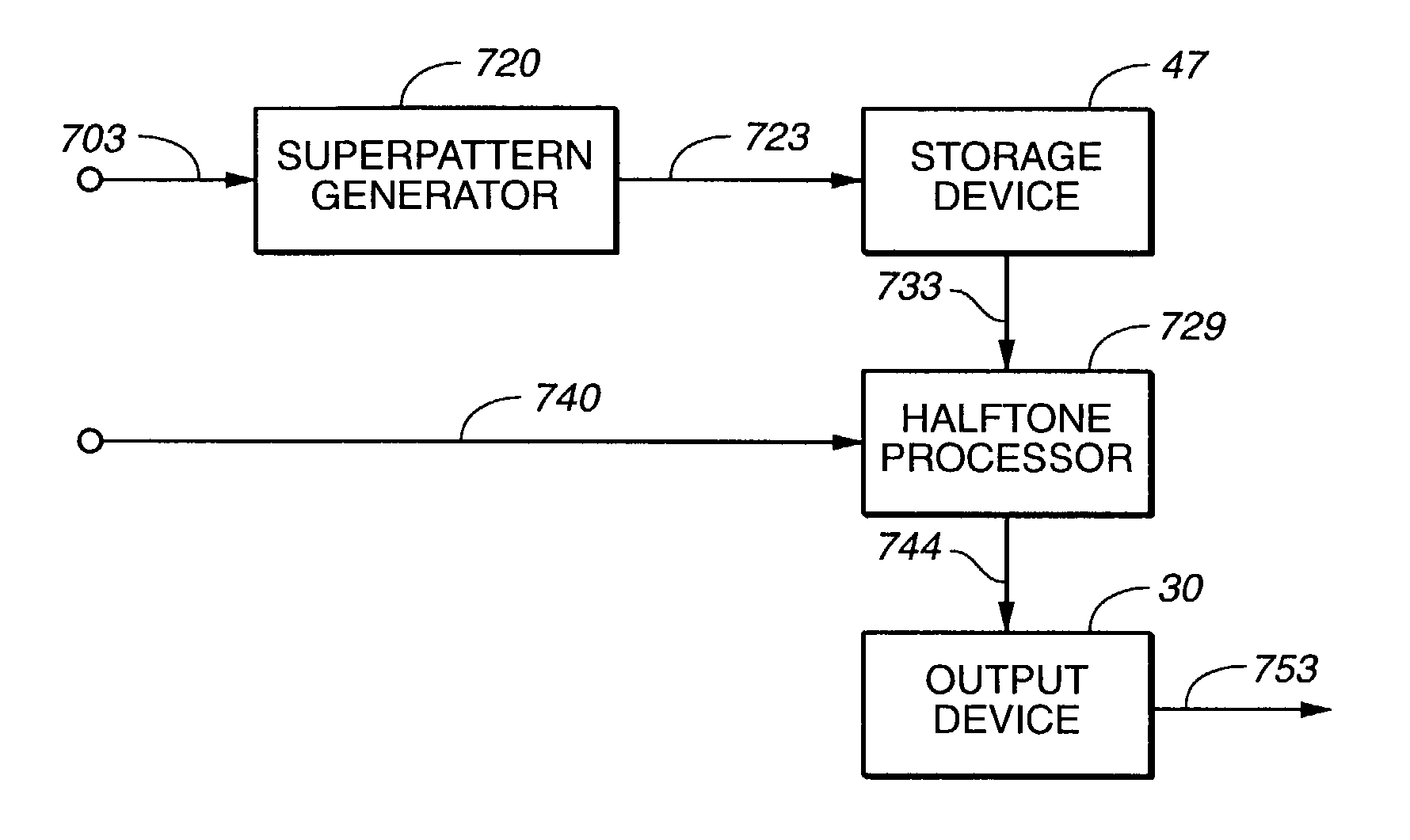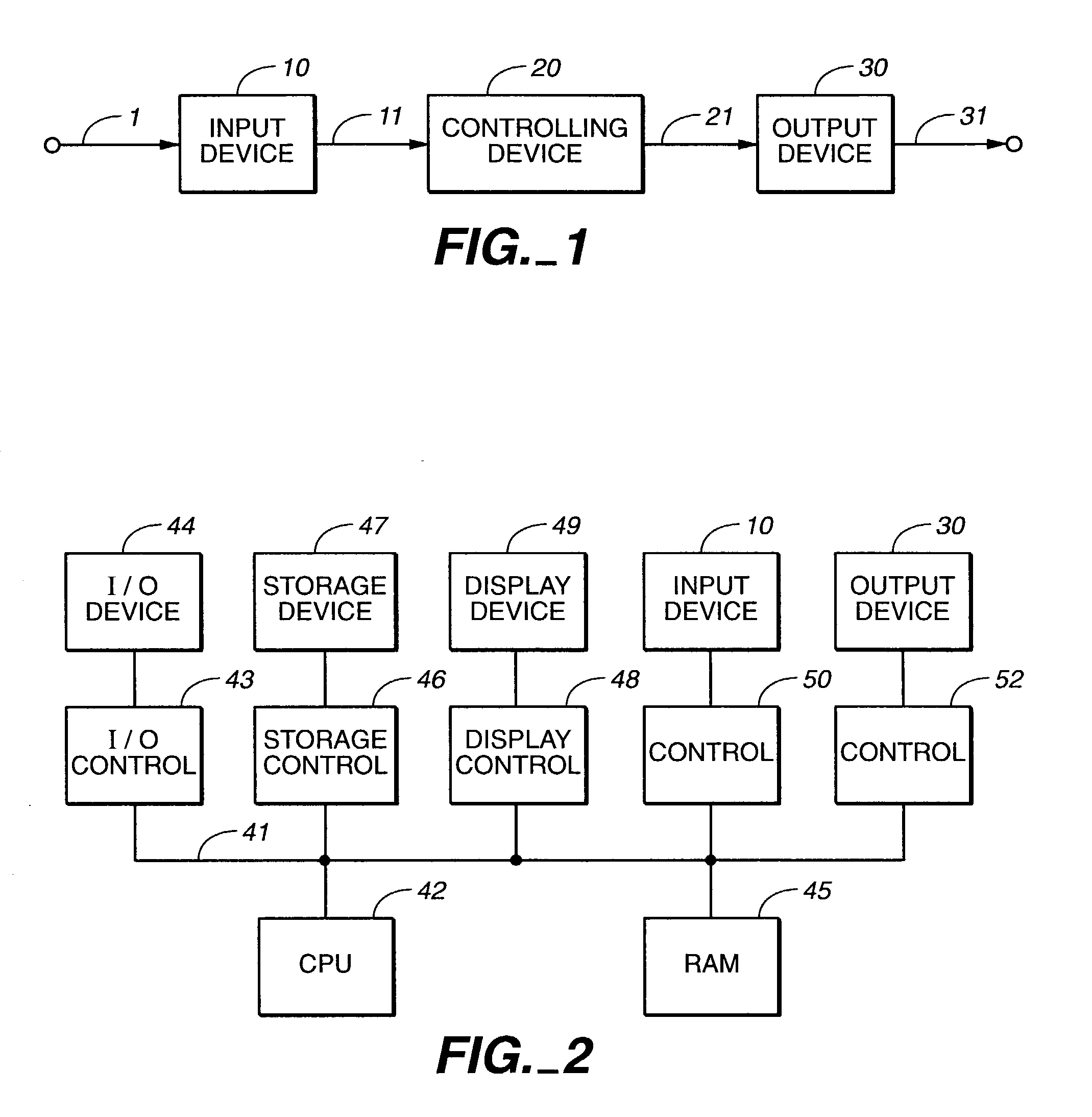Mixed screen design for multi-mode document
- Summary
- Abstract
- Description
- Claims
- Application Information
AI Technical Summary
Benefits of technology
Problems solved by technology
Method used
Image
Examples
Embodiment Construction
System Overview
[0023] FIG. 1 illustrates major components in a typical image reproduction system. Input device 10 receives from path 1 signals representing an original image and generates along path 11 a rasterized representation of the original image. Controlling device 20 receives this representation from path 11 and, in response, generates along path 21 an output-device-dependent representation of the original image. Output device 30 receives this representation from path 21 and, in response, generates along path 31 a printed representation of the original image. The present invention is directed toward improving the perceived quality of the printed representation produced by the output device.
[0024] Input device 10 may be a software application capable of generating text or graphics images or image data representing a photographic image. Alternatively, input device 10 may be an apparatus such as a scanner or camera. If input device 10 is a software application for creating image...
PUM
 Login to View More
Login to View More Abstract
Description
Claims
Application Information
 Login to View More
Login to View More - R&D
- Intellectual Property
- Life Sciences
- Materials
- Tech Scout
- Unparalleled Data Quality
- Higher Quality Content
- 60% Fewer Hallucinations
Browse by: Latest US Patents, China's latest patents, Technical Efficacy Thesaurus, Application Domain, Technology Topic, Popular Technical Reports.
© 2025 PatSnap. All rights reserved.Legal|Privacy policy|Modern Slavery Act Transparency Statement|Sitemap|About US| Contact US: help@patsnap.com



